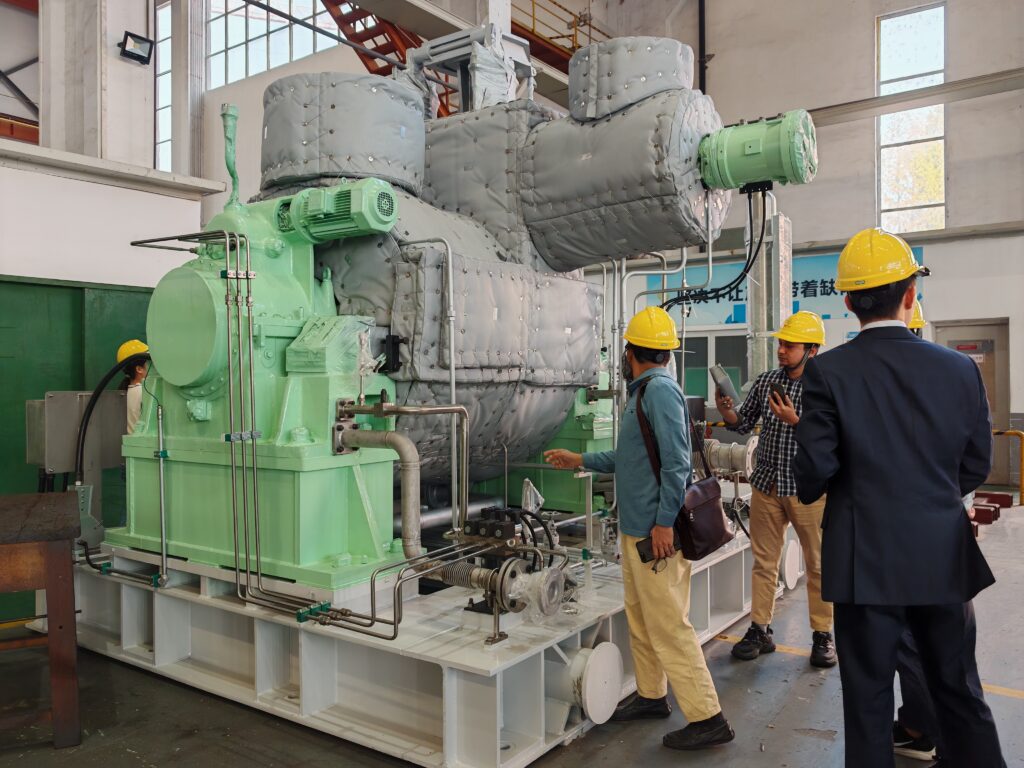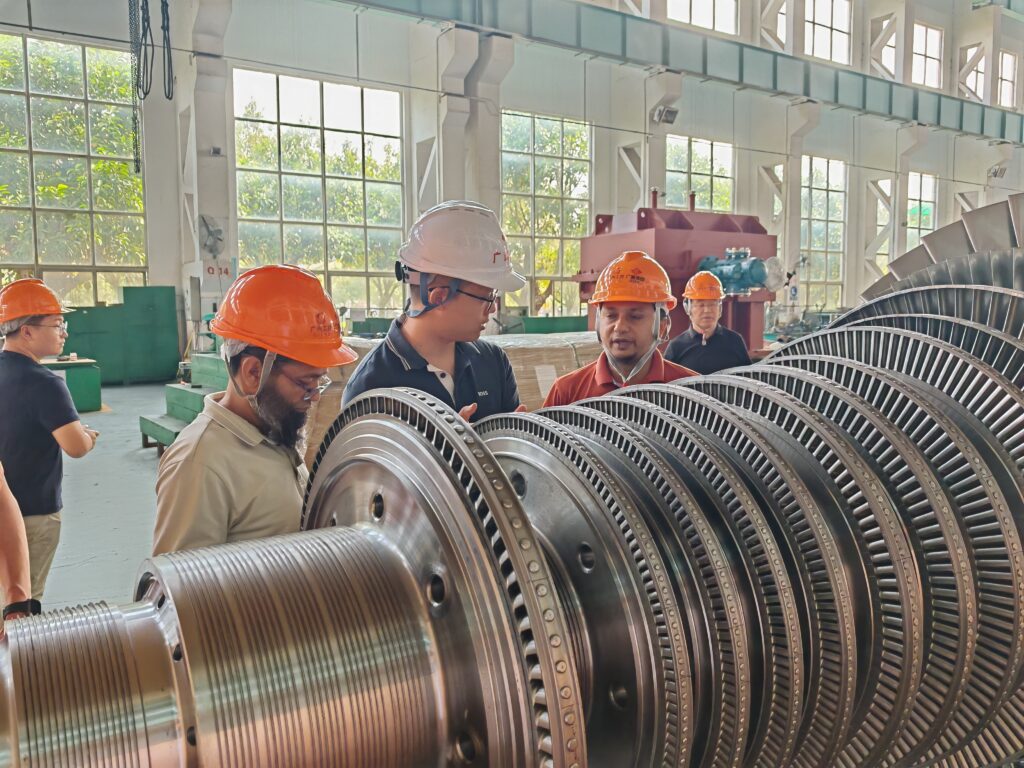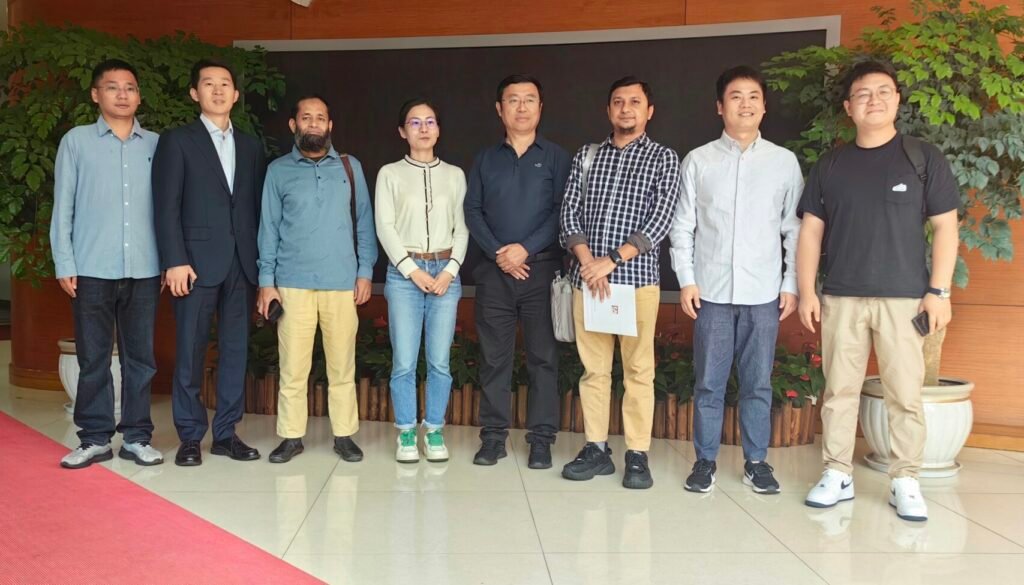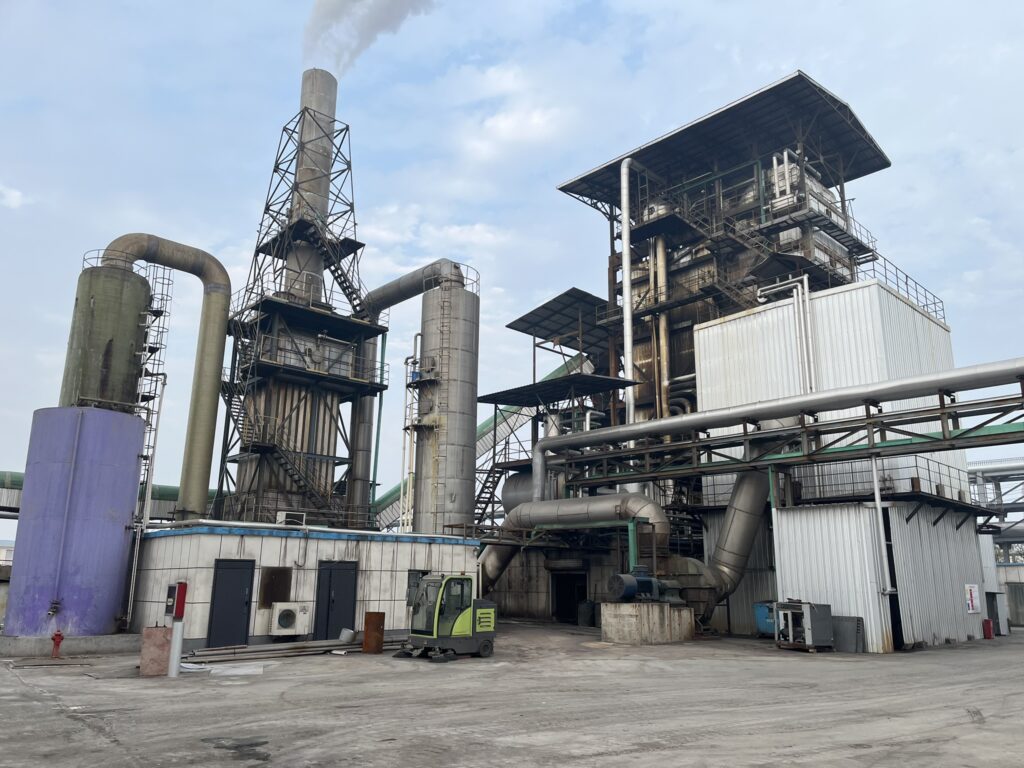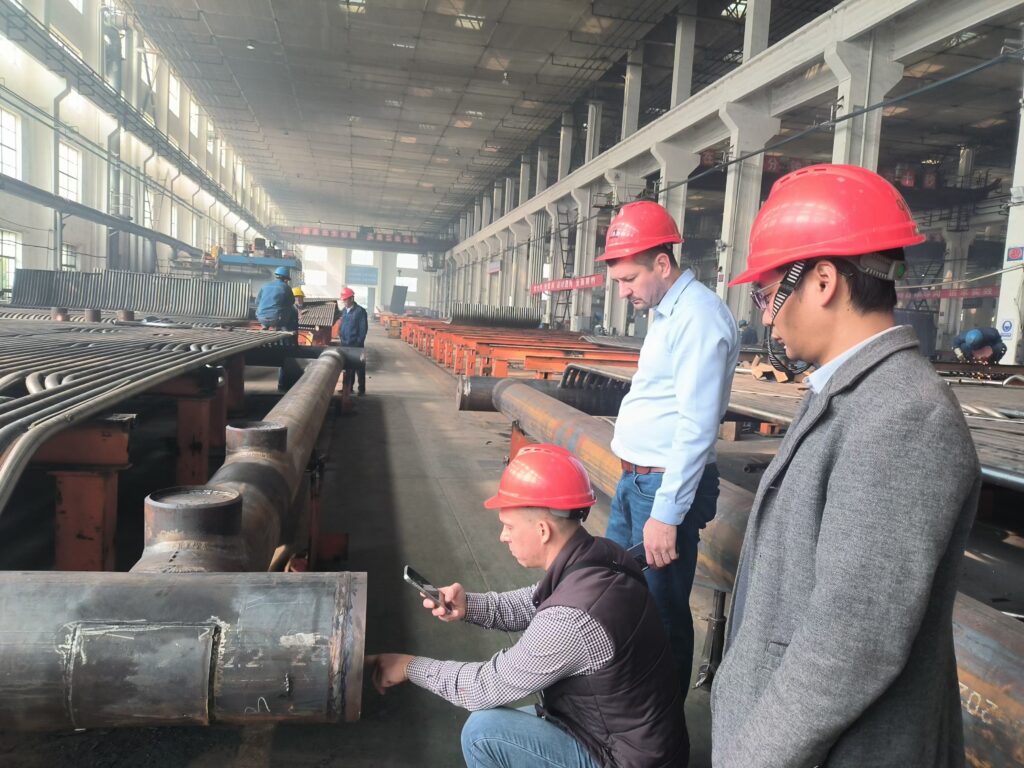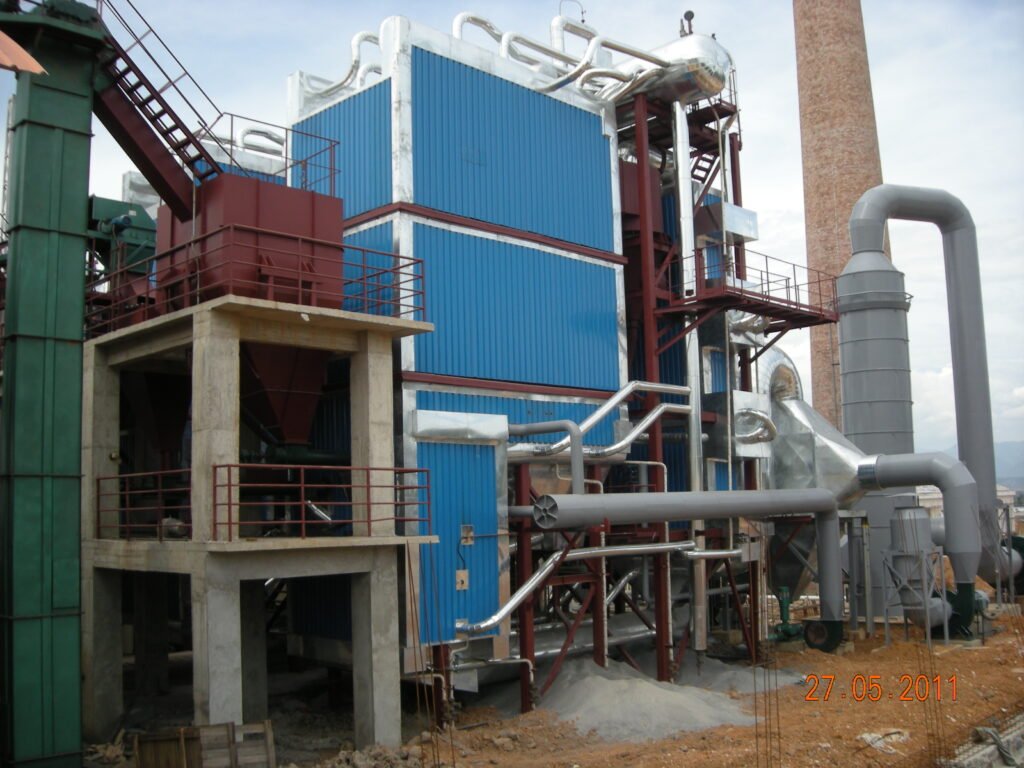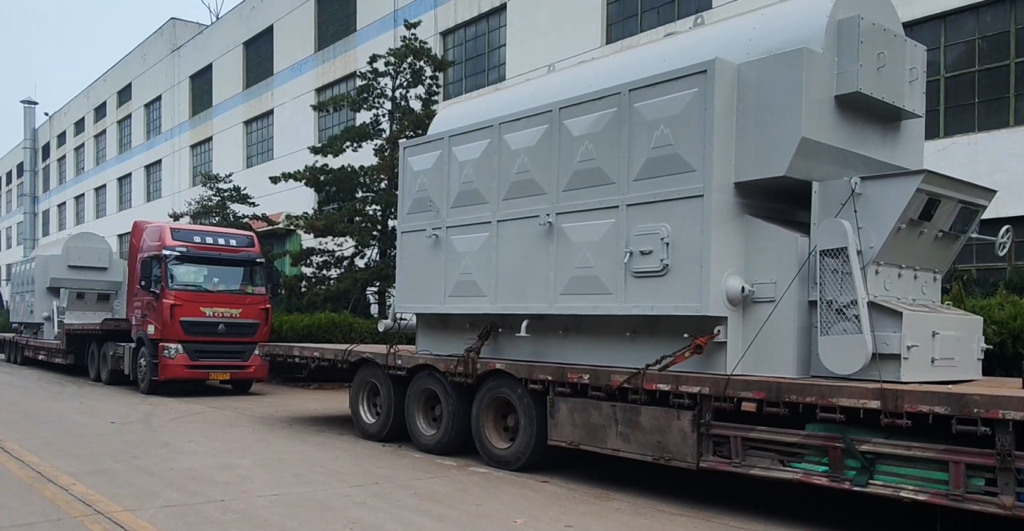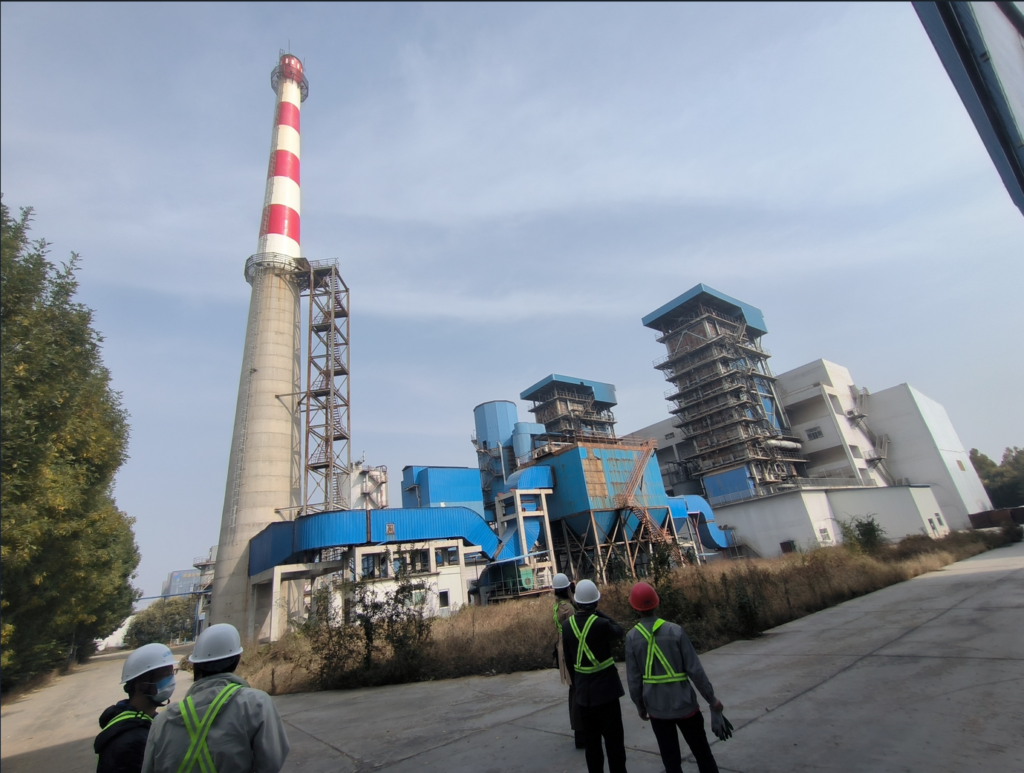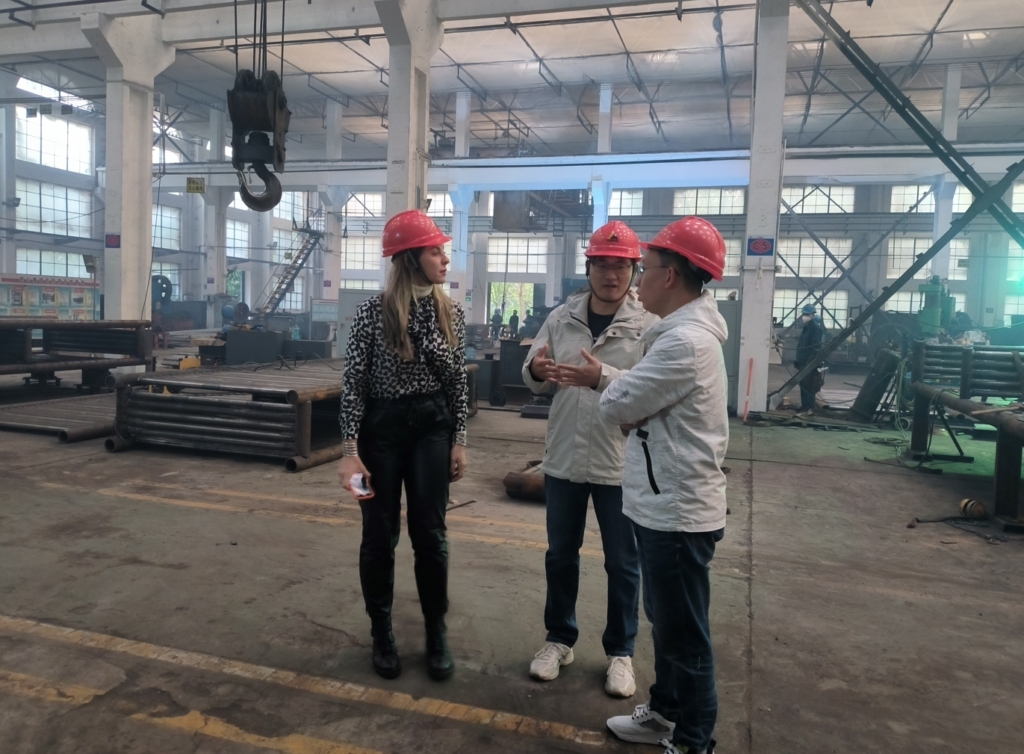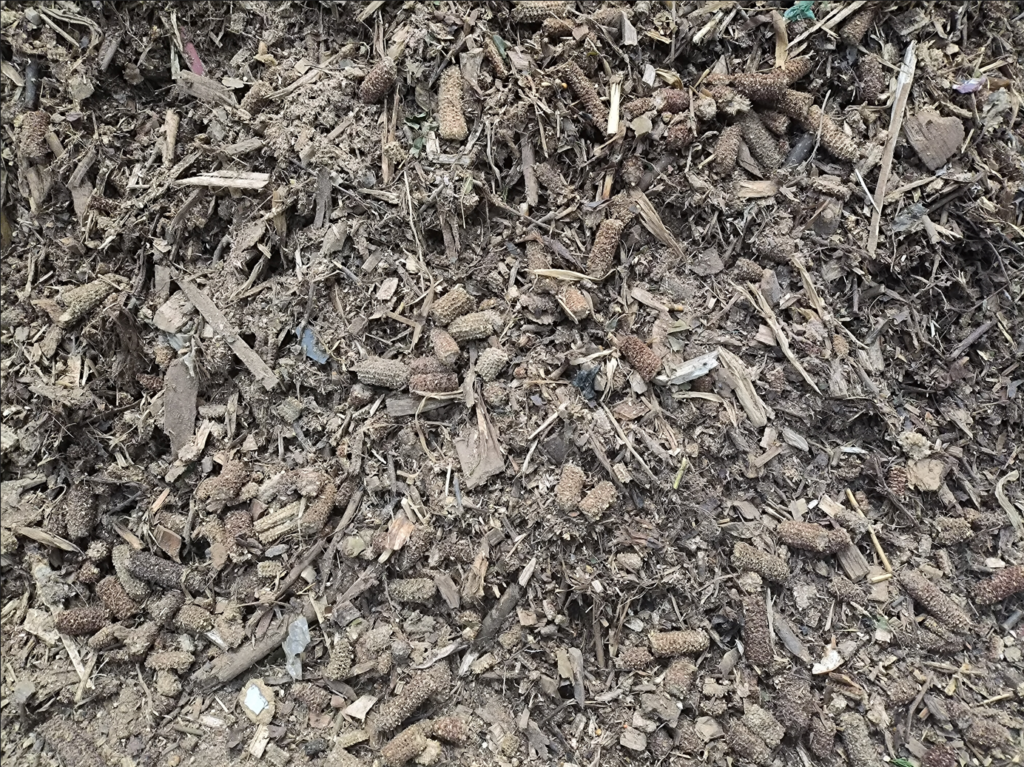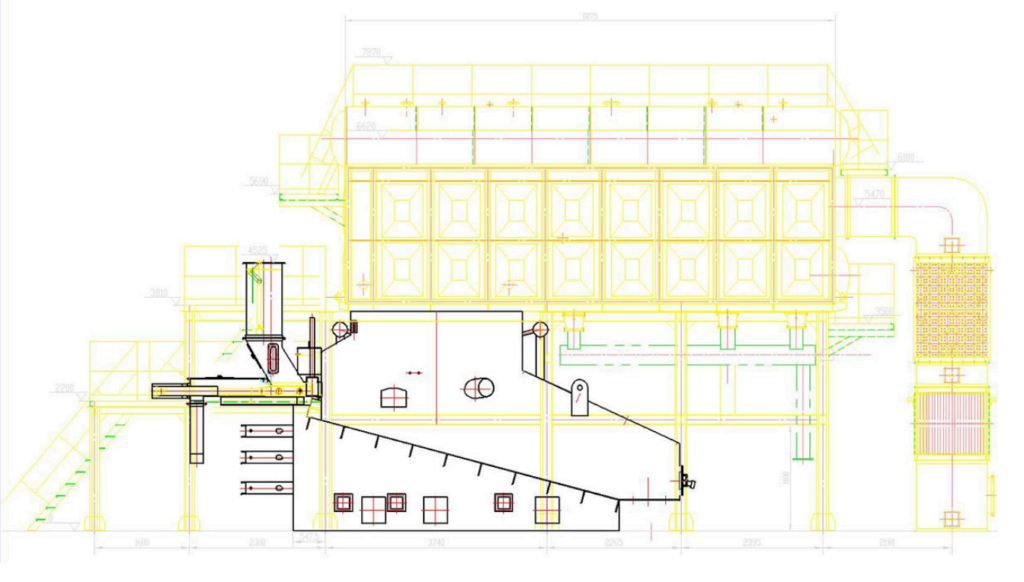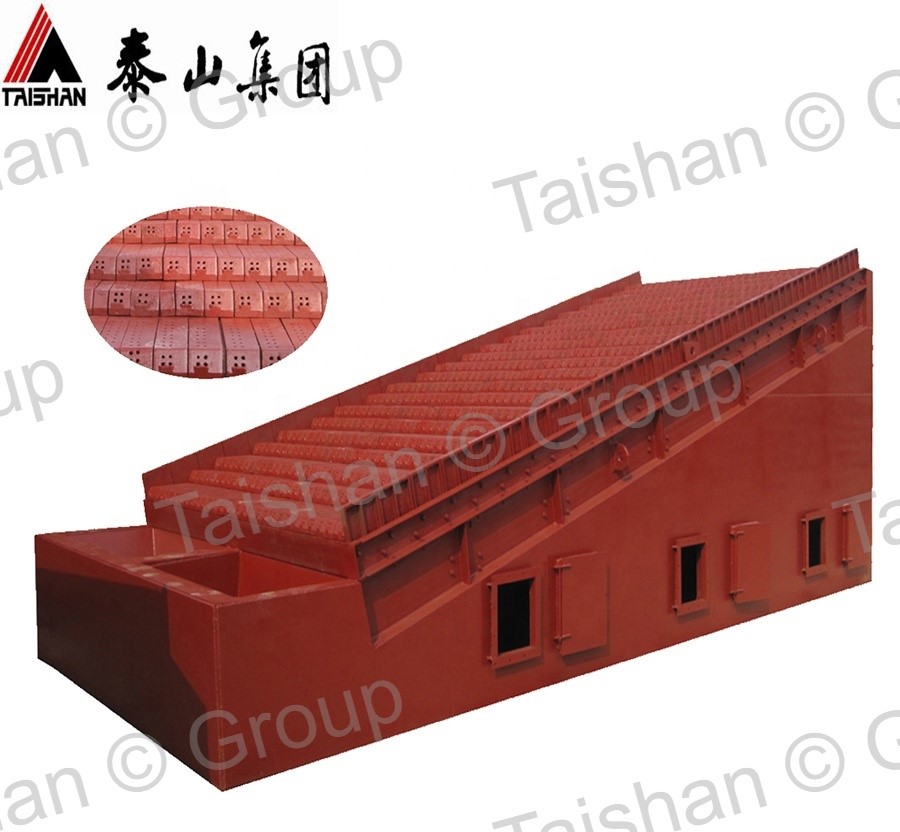What is a Power Plant Boiler?
A power plant boiler is a large system used to generate high-pressure steam for electricity generation. The steam is produced by heating water with fuel combustion in the boiler furnace, and the resulting steam drives a turbine connected to an electric generator.
How Do Power Plant Boilers Work?
The working process of a power plant boiler involves several stages:
Fuel Combustion: Fuel is burned in the boiler’s furnace, generating high-temperature flue gases.
Heat Transfer: Heat from the flue gases is transferred to water tubes, converting water into high-pressure steam.
Steam Generation: Steam is generated and collected in a steam drum, then superheated to increase its energy content.
Steam Turbine: The high-pressure steam is sent to a turbine, where it expands and drives the turbine blades.
Electricity Generation: The turbine drives a generator, producing electricity.
Condensation: After passing through the turbine, the steam is condensed back into water and returned to the boiler for reuse.
Types of Power Plant Boilers
Pulverized Coal Boilers
Pulverized coal boilers burn finely ground coal in a combustion chamber. The coal is ground to a fine powder and blown into the furnace, where it burns at high temperatures. These boilers are commonly used in coal-fired power plants due to their efficiency.
Fluidized Bed Boilers
Fluidized bed boilers suspend solid fuel particles in an upward flow of air, creating a fluid-like state. This allows for more efficient combustion and reduces nitrogen oxide emissions. They can burn a variety of fuels, including coal, biomass, and waste materials.
Circulating Fluidized Bed Boilers
Circulating fluidized bed (CFB) boilers are a type of fluidized bed boiler that circulates fuel particles through the combustion chamber and external heat exchangers for improved efficiency and fuel flexibility.
Gas Turbine Combined Cycle Boilers
Combined cycle boilers use a gas turbine to generate electricity and a heat recovery steam generator (HRSG) to produce steam from the turbine’s exhaust gases. This steam is then used to generate additional electricity, improving overall efficiency.
Biomass Boilers
Biomass boilers burn renewable biomass materials like wood chips, pellets, and agricultural residues to generate steam. They offer an environmentally friendly alternative to fossil fuel boilers and reduce carbon emissions.
Fuel Types for Power Plant Boilers
Coal
Coal is the most common fuel for power plant boilers. It’s available in various grades, from lignite to anthracite. However, coal combustion releases significant greenhouse gases and pollutants.
Natural Gas
Natural gas is a cleaner fuel compared to coal and is increasingly used in combined cycle power plants due to its efficiency and lower emissions.
Biomass
Biomass fuels include wood chips, pellets, agricultural residues, and dedicated energy crops. Biomass combustion is considered carbon-neutral, making it an attractive option for reducing emissions.
Waste Materials
Municipal solid waste, industrial waste, and agricultural residues can also be used as fuel in waste-to-energy boilers, reducing landfill waste and producing renewable energy.
Benefits of Modern Power Plant Boilers
High Efficiency: Modern boilers achieve high efficiency levels through improved combustion technologies.
Reduced Emissions: Advanced emission control systems significantly reduce sulfur dioxide, nitrogen oxide, and particulate matter emissions.
Fuel Flexibility: Many boilers can burn a wide range of fuels, from coal and natural gas to biomass and waste materials.
Reliability: Power plant boilers are designed for continuous operation, ensuring a reliable energy supply.
Scalability: Boilers can be scaled to meet the energy demands of small to large power plants.
Challenges and Considerations
Fuel Availability: Consistent fuel supply is essential for reliable power generation.
Emission Regulations: Strict emission standards require advanced control systems.
Maintenance: Boilers need regular maintenance to ensure safe and efficient operation.
Initial Investment: High capital costs may deter investment in modern boiler technologies.
Boiler Efficiency Improvements and Emission Controls
Efficiency Improvements
Supercritical and Ultra-Supercritical Steam Cycles: Higher steam temperatures and pressures improve efficiency.
Heat Recovery: Use of economizers and air preheaters reduces fuel consumption.
Combustion Optimization: Advanced control systems optimize combustion for maximum efficiency.
Emission Controls
Flue Gas Desulfurization (FGD): Removes sulfur dioxide from flue gases.
Selective Catalytic Reduction (SCR): Reduces nitrogen oxide emissions.
Electrostatic Precipitators and Bag Filters: Remove particulate matter from flue gases.
Applications of Power Plant Boilers
Utility Power Generation: Boilers generate electricity for national grids.
Industrial Power Plants: On-site power plants supply energy to manufacturing facilities.
Cogeneration: Combined heat and power (CHP) plants provide both electricity and process heat.
Selecting the Right Power Plant Boiler
Key Considerations:
Fuel Type: Choose a boiler that matches the available fuel supply.
Capacity: Ensure the boiler capacity meets the power plant’s energy demands.
Efficiency: High-efficiency boilers reduce fuel consumption and emissions.
Emission Controls: Select boilers with advanced emission control systems to meet regulatory standards.
Government Regulations and Incentives
Governments are promoting cleaner energy through regulations and incentives:
- Emission Standards: Strict emission standards require power plants to install advanced pollution controls.
- Carbon Pricing: Carbon taxes and emissions trading encourage a shift to cleaner fuels.
- Renewable Energy Incentives: Subsidies and tax credits promote the adoption of renewable energy sources like biomass.
Power plant boilers are essential to meeting the world’s growing energy demands. They are central to reliable electricity generation, with modern technologies providing improved efficiency and reduced emissions. While challenges like fuel availability and stringent emission standards exist, advances in boiler technology and government incentives make power plant boilers a sustainable and reliable choice.
If your company needs to upgrade its power plant boiler, carefully assess your fuel supply, emission requirements, and energy demands. Investing in the right boiler technology can improve efficiency, reduce emissions, and ensure a steady energy supply.
